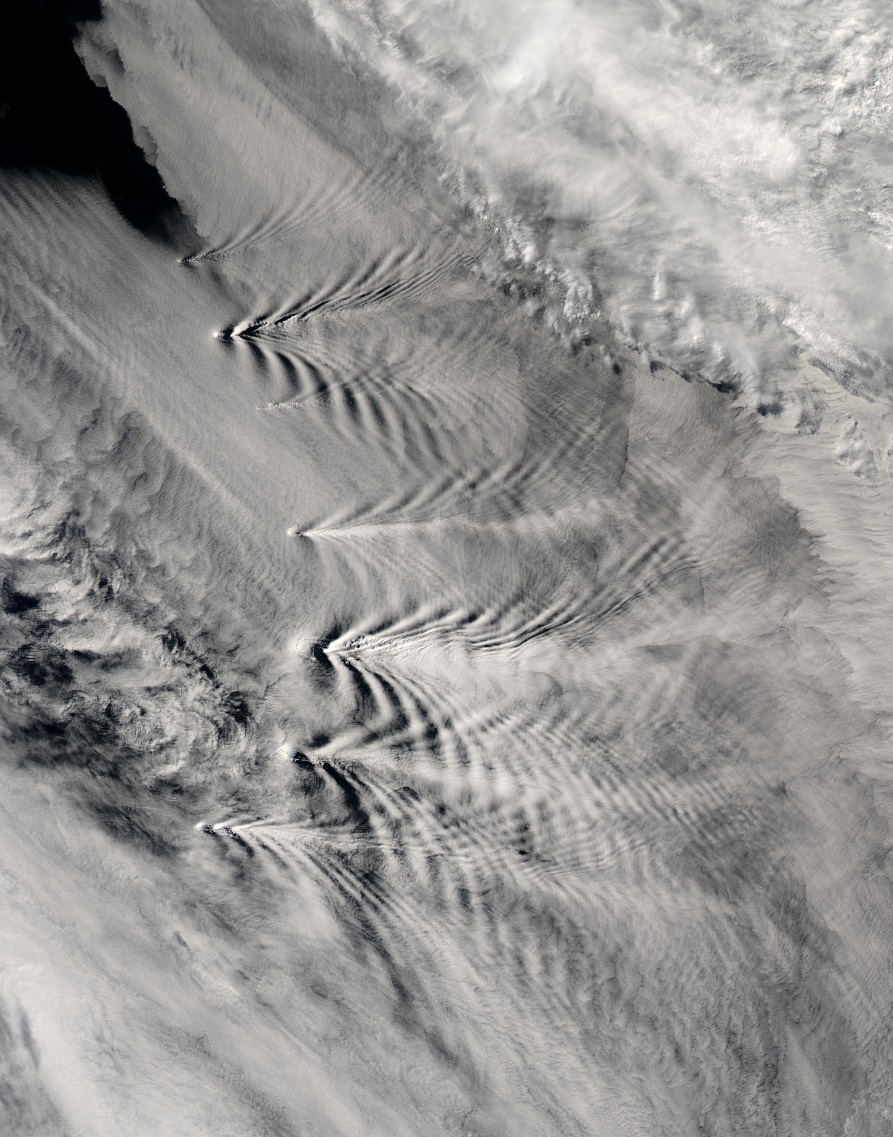Waves & turbulence in geophysical flows#

Geophysical flows are affected by planetary rotation and by gravity. Because of these two effects, waves can propagate in fluids either inertial waves due to the Coriolis force or internal gravity waves if the fluid is stratified in density. These waves are fundamental ingredients of the dynamics of oceans or the atmosphere. When the waves become nonlinear they contribute to turbulence in addition to vortices. Indeed, large amplitude waves can exchange energy through nonlinearity and thus contribute to the famous cascade of energy in scale which is the fundamental characteristics of turbulence. Very large amplitude waves can also overturn and generate directly small-scale turbulence. In oceans, the contribution of internal waves to turbulence has a major impact on the global energy budget by transferring energy to small scales at which it is dissipated either through viscous dissipation of through irreversible mixing of the stratification. This mixing has a major impact on maintaining the large-scale oceanic circulation and thus must be considered in global modeling (MacKinnon et al. Bull. AMS 2017). However, as this contribution occurs are small scales compared to the size of the planet, it must be parametrized accurately models as numerical simulations cannot resolve these scales. This motivates fundamental studies to understand the detailed dynamical regimes and the statistical properties of geophysical turbulence with waves.
